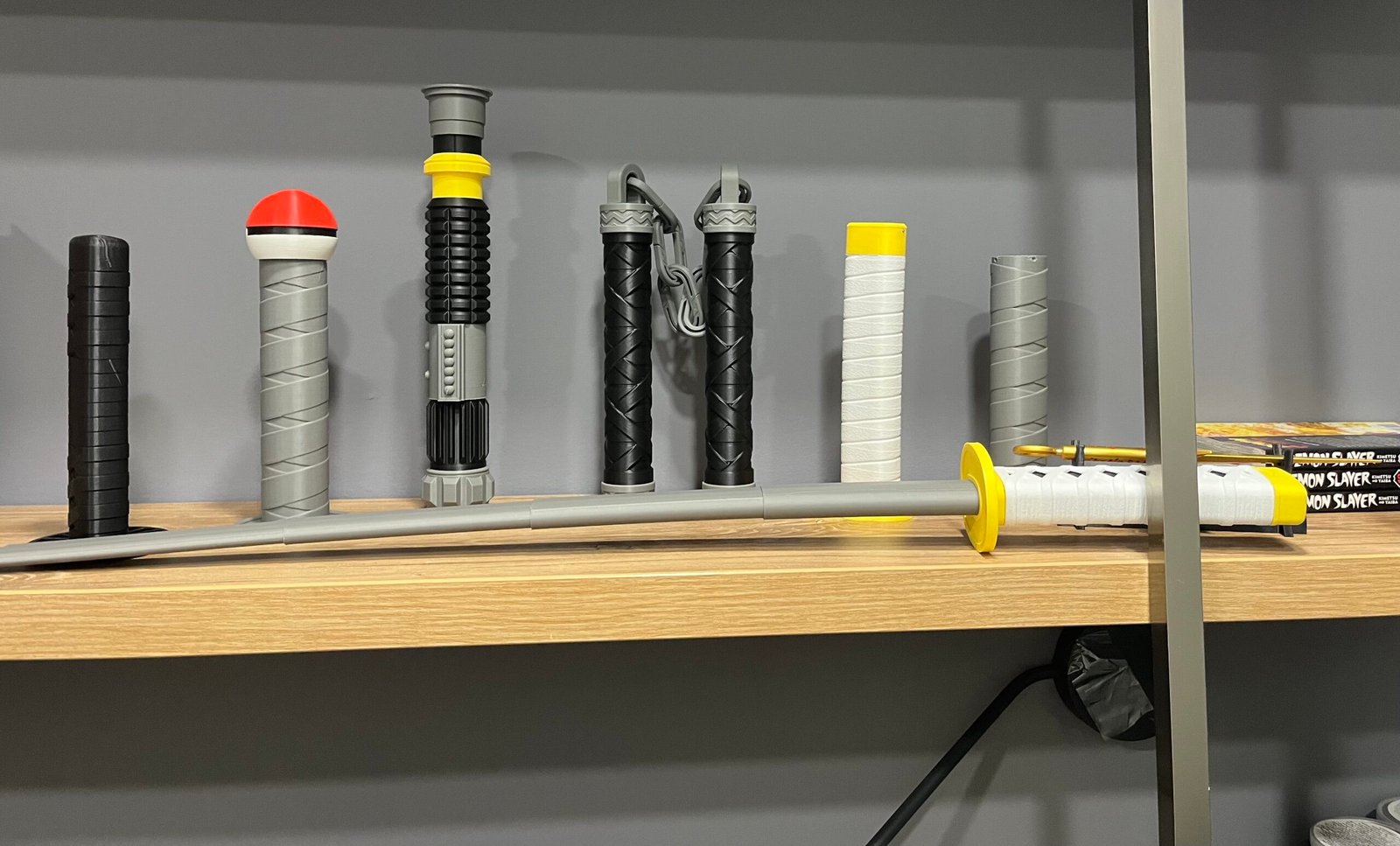Your cart is currently empty!

FictionWorld: Turning a Hobby into My Own Business
As summer wound down, my uncle discovered something that would change the direction of our 3D printing journey: collapsing swords. He found a Pokémon-themed design on MakerWorld, and after printing it, I was hooked.
The Discovery
What amazed me about the collapsing sword was how elegantly it worked. The hilt and blade printed together as one piece, with the cap easy to attach and detach. More importantly, a full-sized sword could collapse down to a compact size—perfect for display, play, or collecting. It was functional, impressive, and surprisingly easy to produce.
I wanted more. We kept searching for new designs and discovered 3DPrintingWorld on Thangs, which led us to The Loot Lab. Both designers created incredible fiction-based items—swords from anime, games, and movies that fans would actually want to own.
A New Direction
This sparked an idea: what if I created my own business focused specifically on fiction-based 3D-printed items? Not just as part of the family’s 3DVinci project, but something that was truly mine.
The reasoning was straightforward. First, I loved anime and fiction-based designs, so I’d genuinely enjoy what I was doing. Second, having multiple businesses meant better chances that at least one would get noticed and gain traction. Third, and most importantly, it would be my own business—something I built and ran myself.
We invested in subscriptions to access the premium designs from 3DPrintingWorld and The Loot Lab. Since we didn’t have time to build a separate website, we decided to launch as a social media store instead.
The name went through one iteration. “FictionPrint” was the first idea, but “FictionWorld” felt better—more general, broader in scope, and somehow just cooler. FictionWorld it was.
Building the Team
My cousin Andria joined as a partner, and that changed everything. First, there was the excitement of building a business with my closest friend. Second, he made the workload manageable—we could divide responsibilities and get more done. Third, his family knew a lot of people, which meant our initial customer base expanded significantly beyond just my immediate circle.
We split the work naturally. Andria handled posts, calculated prices, took orders, and sometimes made deliveries. I focused on ensuring we achieved the best quality on every print, also took some orders, and handled deliveries when needed. With three printers running simultaneously, we could produce swords in just a few hours instead of waiting days for a single printer to finish.
Launching on Social Media
We set up FictionWorld on TikTok and Instagram, starting with slideshow posts of the items themselves. The plan was to occasionally add time-lapses of swords printing and videos showing the collapse mechanism or assembly process.
The response started with people we knew—friends, family, connections through Andria’s network. Orders began coming in steadily, which was encouraging. Then, gradually, something shifted. Random people we didn’t know started reaching out.
The First Real Order
Our first official order after school started was a Demon Slayer katana for a 10-year-old. It was also our roughest start. One of the Anycubic printers was still having issues, and the print kept failing. With a second order coming in for The Loot Lab’s Tetsukiba sword, we were struggling to keep up. That first order took two weeks to complete—far longer than it should have.
But we pushed through. Shortly after, we finally resolved the printer issues, and everything changed. Suddenly we were completing at least two orders per day. The workflow became smooth, the quality was consistent, and the orders kept coming.
What It Meant
The moment a complete stranger placed an order—someone who found us through social media, not through personal connections—I felt genuinely proud. It was validation that what we were building had real value beyond our immediate circle.
Running FictionWorld gave me something I hadn’t fully anticipated: the feeling of owning my own business. It wasn’t just helping with a family project anymore. This was mine. I was making decisions, solving problems, managing quality, and serving real customers who chose to buy from us.
That feeling—knowing people trusted us enough to order from FictionWorld—made all the troubleshooting, late nights printing, and learning worth it. We were building something real, one collapsing sword at a time.
2 responses to “FictionWorld: Turning a Hobby into My Own Business”
-
The printer failure sounds frustrating! What specific model or print setting change finally resolved the issues and smoothed out your workflow?
-
Proud of you :))

Leave a Reply